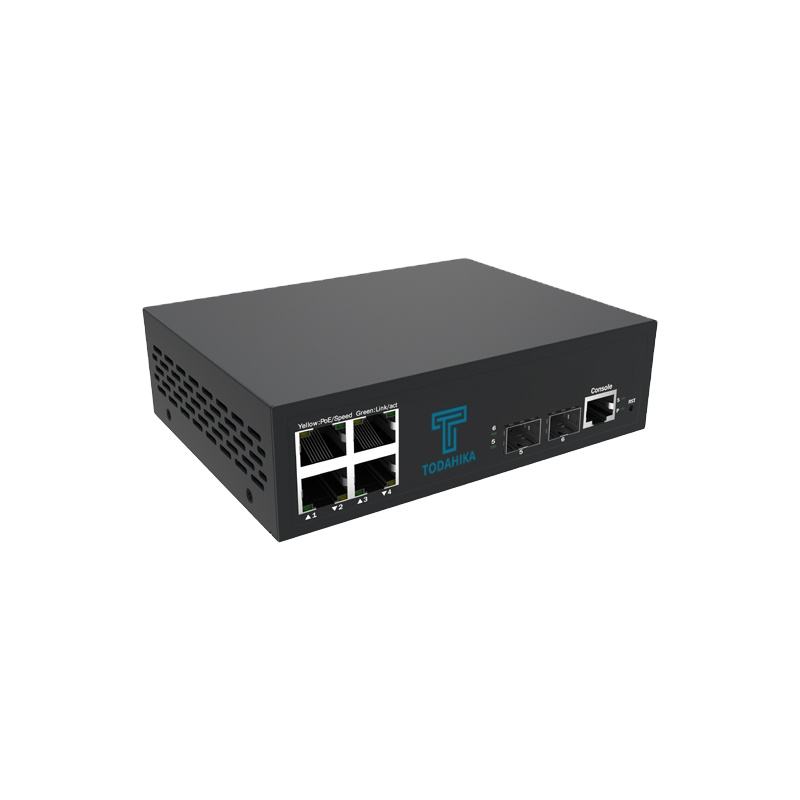In the world of networking technology, two devices generally stand out: switches and routers. While the two terms are often used interchangeably, switches and routers play different roles in a network infrastructure. Understanding these differences is essential for anyone who wants to build a reliable and efficient network, whether in a home or business environment.
What is a network switch? A network switch operates within a single local area network (LAN), connecting multiple devices such as computers, printers, and IP phones. It is responsible for managing communications within this network, enabling devices to share data seamlessly. Switches operate at the Data Link Layer (Layer 2) of the OSI model, using MAC (Media Access Control) addresses to identify devices. This allows the switch to direct data to the correct destination within the same network, avoiding unnecessary traffic and increasing efficiency. Switches can be divided into two main types: Unmanaged switches – Basic switches with no configuration options, ideal for small networks that require simple connectivity. Managed switches – Advanced switches that allow for network customization, including VLANs (Virtual Local Area Networks), Quality of Service (QoS), and traffic prioritization, making them suitable for complex, high-demand networks. What is a router? Switches handle data traffic within a single network, while routers connect different networks together. For example, in a typical home setup, a router connects the local network to the internet, acting as a gateway between the LAN and the wider world. Routers operate at the network layer (layer 3) of the OSI model, using IP addresses to route data between networks, determining the best path for packets and directing them accordingly. Routers come with additional features like firewalls, network address translation (NAT), and sometimes VPN support, making them essential for securing networks and managing external connections. In larger setups, routers help connect multiple networks, such as connecting different office locations or creating separate networks within a building. Key Differences Between Switches and Routers Let's explore some of the core differences between switches and routers: Functionality and Scope: Switches: Operate within a single local area network, connecting devices for internal communication. Routers: Connect multiple networks (such as a LAN to the internet or different office networks), managing external and internal data flows. Data Handling: Switches: Use MAC addresses to identify data and forward it to the correct device within the same network. Routers: Use IP addresses to route data between networks, ensuring that data reaches its final destination, whether internal or external. Security Features:Switch: Typically provides basic security, but managed switches can include features like VLAN segmentation for added protection. Router: Provides a higher level of security with built-in firewall, NAT, and sometimes VPN capabilities, protecting the network from unauthorized access. Device Connectivity:Switch: Primarily connects devices (such as computers and printers) within the same network, facilitating data sharing and communication. Router: Connects different networks, links LANs to the internet, and enables devices to access external resources. Common Use Cases:Switch: Commonly used in environments where internal device communication is critical, such as offices or schools. Router: Essential for connecting local networks to the internet or linking different network segments within a large enterprise. Do you need both? In most cases, a network will benefit from both a switch and a router. In a home environment, a typical router may include built-in switch functionality, providing internet connectivity and device-to-device communication within the same network. However, in commercial environments with larger and more complex networks, dedicated switches and routers are used to optimize performance and control, respectively. ConclusionSwitches and routers each play a unique role in a network infrastructure. Switches focus on internal connectivity, creating efficient paths within a local network, while routers are responsible for connecting networks together and managing traffic between them and the internet. By understanding these differences, you can build a network that meets your needs, balancing speed, security, and connectivity. As network demands grow with technological advances, having the right combination of switches and routers can help ensure smooth operation for home users and businesses. With the right equipment, you'll have a reliable and scalable network that's ready to meet the demands of the digital age.
Post time: Nov-15-2024




